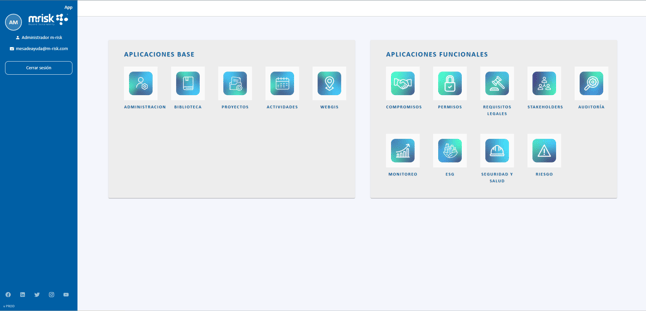How to Establish a Digital Strategy for ESG Leaders

An ESG leader stands out for their ability to align environmental and social criteria with the organization's overall direction, aiming to create long-term value for shareholders and society as a whole.
In an increasingly digitalized and competitive world, ESG leaders face complex challenges if they do not have a digital strategy that allows them to demonstrate their performance and build trust and credibility.
Let's understand that a digital strategy is the set of actions and decisions that an organization takes to leverage digital technologies and effective data generation to improve its performance, competitiveness, and socio-environmental impact.
In this sense, not defining a strategic plan can cause inconveniences that negatively affect the profitability and reputation of companies, such as:
- Lack of transparency in data presentation.
- Misalignment with the expectations and demands of stakeholders.
- Missed opportunities for innovation and differentiation.
In a context of growing demand for sustainability issues from regulators, investors, and employees themselves, ESG leaders must adapt to changes and seize the opportunities offered by digital transformation.
To establish an effective digital strategy, ESG leaders are recommended to follow the following steps:
1. Define the ESG vision and goals
The first step is to define what impact the company wants to have on the environment, society, and corporate governance, and how to measure it.
These objectives must be consistent with the organization's mission, culture, and values, and aligned with the expectations of its stakeholders.
Additionally, the objectives should be SMART (specific, measurable, achievable, relevant, and time-bound) in order to evaluate the progress and performance of the strategy.
2. Analyze the environment and the current situation
The second step is to analyze the environment and the current situation of the organization, both internally and externally, to identify the opportunities and challenges posed by digital tools in meeting ESG objectives.
The external analysis should consider market trends, the needs and preferences of involved stakeholders, regulations and standards, technological advancements, competitors, and potential partners.
The internal analysis should assess the organization's capabilities and resources, both human and technological, as well as the processes, products, and services it offers, and the level of digital maturity it has.
3. Design a digital roadmap
This refers to drawing up an action plan detailing the initiatives and projects to be implemented to achieve ESG objectives through the use of digital resources and data generation.
The roadmap should prioritize initiatives according to their impact, urgency, and feasibility, as well as the allocation of resources, responsible parties, and necessary timelines for implementation.
Some examples of digital initiatives for ESG leaders are:
- Implementing energy efficiency solutions, waste management, sustainable mobility, to reduce resource consumption.
- Including digital platforms in management that have tools for data analysis and monitoring. Also, for generating reliable reports for optimizing decision-making, transparency, and traceability of operations, with the aim of facilitating compliance with standards and quality and safety standards.
- Promoting digital culture, continuous training, and diversity and inclusion in the organization, which enhance talent, innovation, and employee commitment, and reinforce the company's reputation and trust.
4. Execute and monitor the digital strategy
The fourth and final step involves implementing the initiatives and projects defined in the roadmap, and measuring and evaluating the results obtained in terms of ESG.
To do this, it is necessary to establish indicators and metrics that allow quantifying and qualifying the impact of digital actions on the environmental, social, and governance performance of the organization.
Likewise, it is important to continuously monitor and quality control initiatives and projects, to detect possible deviations, risks, or problems, and apply the necessary corrective or preventive measures.
Additional tips for establishing an effective digital strategy
- It is important to involve all levels of the company in the implementation of the digital strategy, including business leaders and collaborators.
- The digital world changes rapidly, so it is important that the digital strategy is flexible and adaptable to changes.
- It is not necessary to implement everything at once. Start with a few pilot projects and learn from your successes and failures.
Finally, it is advisable to communicate and disseminate the achievements and good practices of the digital strategy, both internally and externally, to generate trust, recognition, and shared value among stakeholders.
Adopting digital solutions aligned with the principles of a robust ESG strategy not only simplifies the process but also enhances effectiveness and transparency in the management of sustainable practices.
Investing in ESG software is not only a pragmatic measure; it is a commitment to building a company that not only thrives but also positively contributes to the world around it.
An effective ESG software acts as a centralized repository for collecting and managing sustainability-related data, allowing companies to monitor and evaluate their performance in key metrics.
Without a digital platform, it is difficult to have precise knowledge of the performance of ESG management and its current compliance status. This type of solution is a useful way to identify areas that need improvement, as well as excellent support in demonstrating your organization's work related to those criteria.
Additionally, it simplifies the process of report generation, facilitating the presentation of data in a clear and understandable manner for all stakeholders, and leads to the identification of opportunities and strategic decisions to strengthen the company's sustainable position in the market.
Having a technological ally that accompanies you in reaching the priorities and fundamental premises of your digital strategy will be of great help, contact us to support you in responsible and sustainable management.





